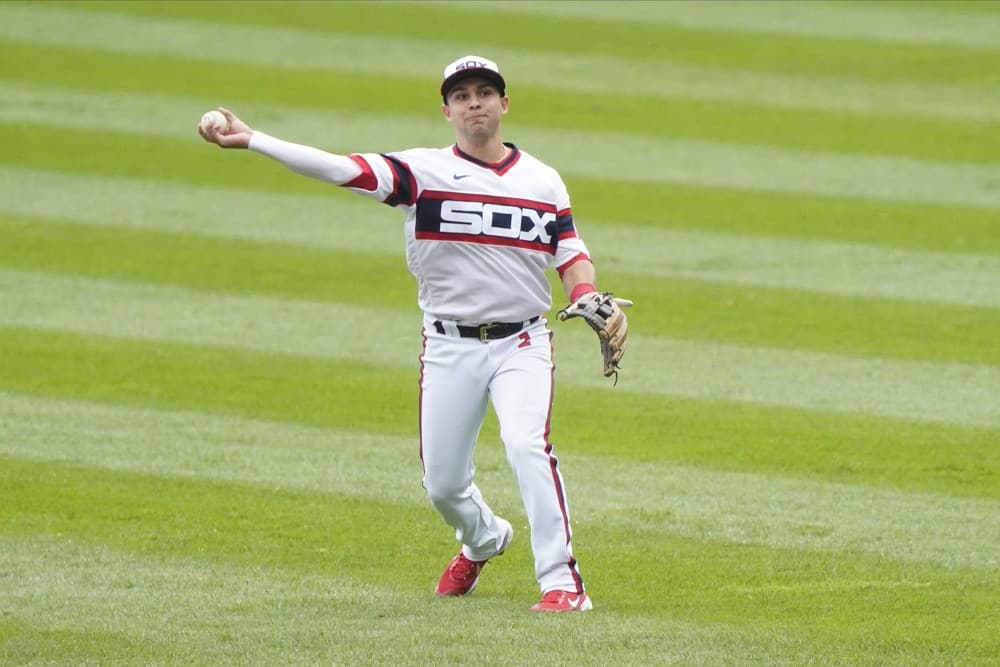While it'd be nice if Dan Szymborski's job merely involved projecting current and potential members of the White Sox, he's also required to cover the former White Sox who could make fans and front office members kick themselves. Therefore, a couple days after publishing the White Sox's ZiPS projections for 2022, he released next year's forecast for the Chicago Cubs, including Nick Madrigal.
Trading Madrigal (along with Codi Heuer) for Craig Kimbrel courted a significant amount of risk, and we're seeing some of that risk materialize with projections at second base. When you look at the diamond graphics depicting the ZiPS performances with FanGraphs' depth chart projections ...
... it suggests the White Sox shot themselves in the foot while standing on a boat, and the bullet traveled through both.
When you have two second basemen, you don't have one -- at least when the production is half that of the one second baseman traded away. A 2.3 WAR projection is generally a welcome sight for somebody making the league minimum, and Madrigal's at that level for one more year.
However, if you scroll down the post and get to the unfiltered ZiPS data, and it paints a slightly dimmer picture for Madrigal -- especially when accounting for what the system pegged him for in 2021.
- 2021 ZiPS: .290/.335/.368, 3.3 WAR over 462 PA
- 2021 actual: .305/.349/.425, 1.3 WAR over 215 PA
- 2022 ZiPS: .295/.339/.386, 1.7 WAR over 417 PA
Because Madrigal once again played less than half a season due to a significant injury, the conversation remains the same as the one we had last year -- can a projection system quickly get a handle on such an extreme profile with so few peers? The ZiPS line still feels underequipped, especially since Madrigal was hitting better than ever before his injury (.365/.420/.568 over his final 20 games of 2021).
Yet the issue is still the one Rick Hahn wrestled with at the deadline -- how many surgeries can Madrigal endure before it starts lowering the top end of his skill set? He's lost large chunks of three of his last four seasons with hand, shoulder and hamstring injuries, with the latter two requiring surgeries. Madrigal made small-to-sizable improvements in all three facets of the game in 2021's limited sample, but because he stopped being able to take literal strides on the field, he missed out on an opportunity to make figurative strides on paper. Max effort is by definition an arduous way to make a living, which is why most players try to get by on less when the opportunity allows.
When the White Sox made the decision to deal Madrigal for Craig Kimbrel, I was mostly stunned that Madrigal could be dealt for something resembling his commensurate big-picture value while injured for the remainder of the season, so I reacted with three questions:
- How much can César Hernández make up for Madrigal?
- Is Madrigal more an ideal than an actuality?
- What's the specific value of 2021?
The current problem is that the answers to 1) and 3) were 10th-percentile outcomes. Kimbrel and Hernández were supposed to buy the White Sox a little bit of time with their team options for 2022. They instead provided zero cover. Neither factored into the postseason push as imagined, and even if everybody wanted to see Kimbrel pitch, the shape of the series with Houston sidelined high-leverage relievers on both sides.
The White Sox declined Hernández's $6 million option and the market said it was a wise choice, as he signed with the Nationals for $4 million. Kimbrel's $16 million option remains on the books, and nobody is particularly thrilled about it.
At the time of the deal, I mentioned that Hahn was flirting with two layers of trouble with this kind of trade.
As good as Kimbrel has been — and he was the best reliever available — one has to acknowledge the risk in trading players who are significant assets to a lineup for high-leverage relievers. There’s the matter of standard reliever volatility and the need to succeed over naturally small samples. There’s also the idea that the game needs to get to them in order to matter. Over the course of a 162-game season, a functioning Madrigal is the kind of player who makes a functioning Kimbrel matter.
... and it turns out that both volatility, with the only solace that Madrigal wouldn't have mattered for 2021 either.
With regards to Madrigal, the question about 2022 and beyond remains the same, in that he might be hard-pressed to put together the best version of his game month after month. It just would've been a lot more comfortable watching it if Hernández looked like a cromulent second baseman on an easily absorbable salary, or if Kimbrel looked like an asset that could land somebody comparable. As long as there isn't a similarly acceptable option on hand, everybody on the White Sox's side is watching this question resolve itself from a very exposed position.
(Photo by Rob Grabowski/Icon Sportswire)






